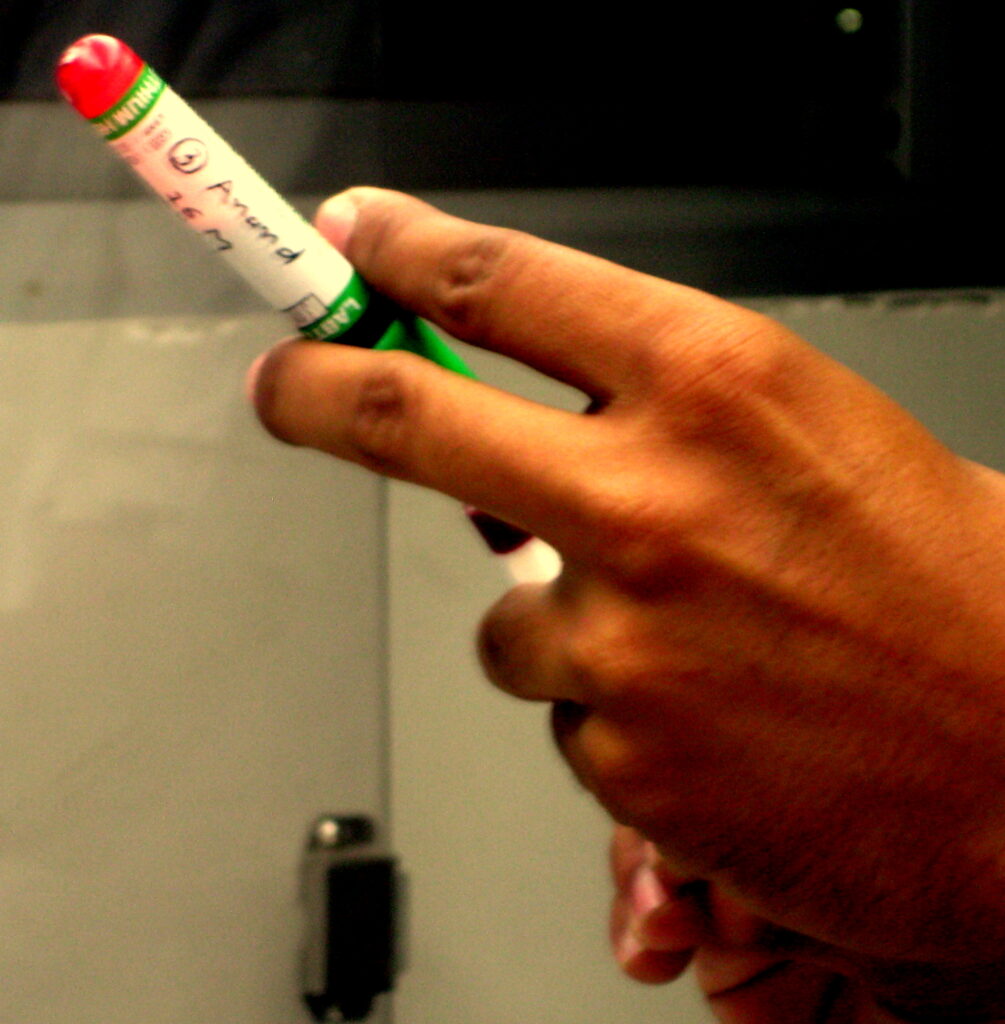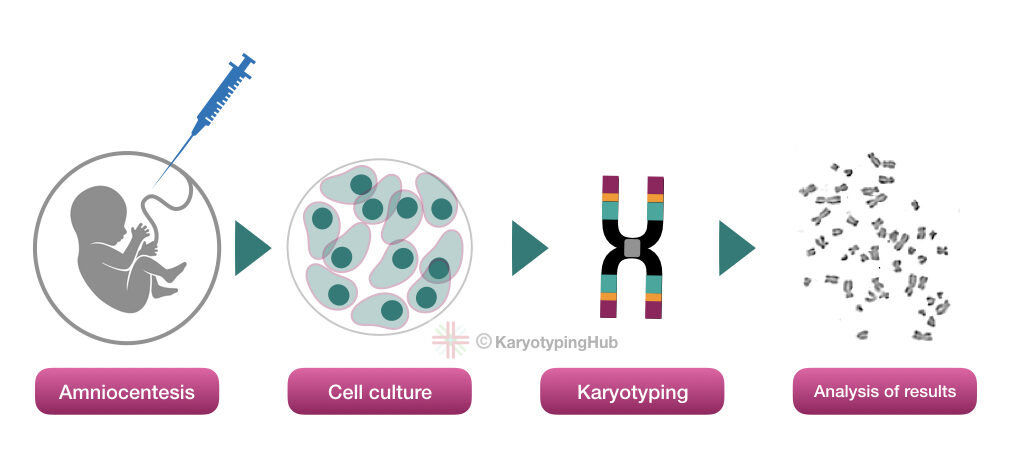“A test performed by the cytogeneticist to know chromosomal abnormalities associated with a fetus or person is known as a karyotyping test.”
Genetic testing is now widely used in fetal testing and hence mental, cognitive or developmental abnormalities can be detected earlier during pregnancy.
A DNA test and a chromosomal test are used to screen genetic abnormalities associated with DNA sequence or a chromosome, respectively. The chromosome test is also known as karyotype or karyotype testing.
Talk of the topics: General introduction of chromosome, cytogenetics and karyotyping, What is a karyotype test, different steps, and procedure and importance of it.
Studying chromosomes says so many things about us or a baby in the womb. An unborn baby can be screened to encounter the risk of various chromosomal anomalies and that’s for the karyotyping test to be performed.
Humans have 23 pairs of chromosomes present in each cell on which all genetic material is located. Loss or gain in the genetic material of a particular chromosome causes several serious problems. Using the karyotyping method or a test we can detect it.
Usually, the karyotyping test is commonly employed for prenatal screening and diagnosis. However, we can also perform karyotyping for postnatal and neonatal screening.
Sample type:
Samples like blood, tissue, solid tissue or tumor, amniotic fluid or chorionic villi are taken for cell culture in order to perform the karyotype test.
Amniotic fluid and chorionic villi sample:
The Amniotic fluid and chorionic fluid samples are taken for prenatal diagnosis. A CVS is taken between 10 to 13 weeks of pregnancy while the amniotic fluid is taken after the 13th week. Notably, the Amniotic fluid is not usually recommended.
A technique known as amniocentesis using which the prenatal sample is collected in which applying a long needle a sample from the baby present in the womb is collected. The present sample collection method is invasive though highly recommended for high-risk pregnancies.
Blood sample:
A blood sample is taken in order to karyotype adults. 2 to 5 ml of blood sample is collected into a heparin tube. EDTA tubes are not used to collect a blood sample for karyotyping.
Solid tumors and other tissue samples are collected into a normal tube or saline tube and sent to the karyotype center. All the samples must be transported at 4°C temperature and within 24 hours to the center.
Bone marrow:
In the case of some blood disorders and cancer, the bane marrow karyotyping is performed. Usually, an expert doctor collects some portion of bone marrow to culture.

Steps and procedure:
We have explained every step and the entire procedure of karyotyping or a karyotype test in our previous article. You can read it here: What is karyotyping?
Anyway, here I am explaining it in brief.
The cells are cultured using the ready to use culture media, under strict aseptic conditions.
After that, the cell culture is incubated into the CO2 incubator for at least 72 hours.
To arrest the cells at the metaphase, the colchicine is added to the culture and then harvested using the fixative.
In order to observe the chromosomes, the slide is stained or banded using either Giemsa or other banding methods.

Results and interpretations:
An expert looks into chromosomes to study various chromosomal problems associated with the sample, however, nowadays an automated microscopy system scans the entire slides to do so.
Some of the common indications of the karyotype test are enlisted here:
Indications:
Here the test is employed to know various chromosomal disorders associated with the fetus or person or suspect. Some of the common indications are enlisted here:
Down syndrome: The down syndrome is a trisomy of chromosome 21. Here instead of the pair of 21 numbers of chromosomes, one extra chromosome occurs. This causes serious developmental, mental, and neurological problems.
Klinefelter syndrome: A pair of the X chromosomes with one Y chromosome in a male are observed in Klinefelter syndrome. Usually, babies born with the present syndrome may suffer from severe infertility. This condition isn’t observed in females.
Turner syndrome: Only a single X chromosome is observed in baby girls with Turner syndrome. The patient suffers from heart problems, majorly with short hight, and other developmental problems.
Patau syndrome: Yet another form of the rare chromosomal disorder is the trisomy of 13 occurred due to the event of non-disjunction. Mental impairment and other cognitive problems are commonly observed, babies with the present condition have a short life-span of only one year.
Moreover, cri-du-chat syndrome, Edward syndrome and other chromosomal alterations can also be indicated using a karyotype test.
Usually, the present testing method is applicable in prenatal genetic screening, as we said. Some common uses of the present test are listed here:
To check chromosomal abnormalities associated with a baby
To know certain types of cancer. For example, the Philadelphia chromosome- a translocation between two chromosomes is an indication of myeloid leukemia.
To know the reason behind recurrent abortion, if any.
To know the reason behind stillbirth.
To indicate or detect inherited genetic conditions.
Notably, not all women need a karyotype test. You should need the test only in some conditions indicated by a doctor or advice by an expert.
Related article: What is the karyotype used for?

When to go for a test?
The doctor advises only the high-risk pregnancies for a karyotype test because the test is a bit costlier.
In case of more than two consecutive miscarriages once should need karyotype testing.
In case of a family history of cancer, inherited cancer of genetic detect.
Pregnancy over the age of 35. Research indicates that pregnant women over the age of 35 have a higher chance of a genetically abnormal baby and considering the high-risk pregnancy, it isn’t always the case, though.
Related article: Definition of Karyotype.
Chromosome test for gender:
Fetal testing for gender determination is a legal offense in some countries, however not in others. Using the present testing method, the gender of a fetus of a baby can be determined.
In human’s males have XY chromosomes while the females have two XX chromosomes with 22 pairs of other autosomal chromosomes.
Both X and Y chromosomes are different in shape and size and thus can be identified easily.
Risks associated with the test:
The test is not itself risky enough to affect the patient physically, however, results of karyotype can cause mental stress to patients.
During prenatal testing, we are performing amniocentesis in which the chance of uncertain miscarriage is high, however, not in all cases. Because of this reason, amniocentesis is generally not preferred to women having miscarriage histories.
Furthermore, the results of the karyotype test aren’t so accurate as of the DNA test. The chance of false results is considerably more because ultimately it is observed by human eyes.
With this, as we said, positive results can create emotional and mental trauma to the patient, she may feel anxiety, depression, and mental breakdown.
Now for a common person, there may be a question in your mind that what outcomes we expect from the karyotype test?
The outcomes are associated with chromosomes only, not DNA, first of all.
- You may expect, change in the number of chromosomes,
- Change in the structure of a chromosome.
- Loss or gain of the genetic material of chromosomes.
- Or absolutely normal karyotype.
Conclusion:
The karyotype test is entirely different from a DNA test or any other test. It involves a complicated process and high manpower.
Also, to read the results, expert’s observations and high-end expertise are needed. The test is also costlier and time-consuming. Nonetheless, for prenatal genetic testing, It has been used for a very long time and will continue to be so in the future.



